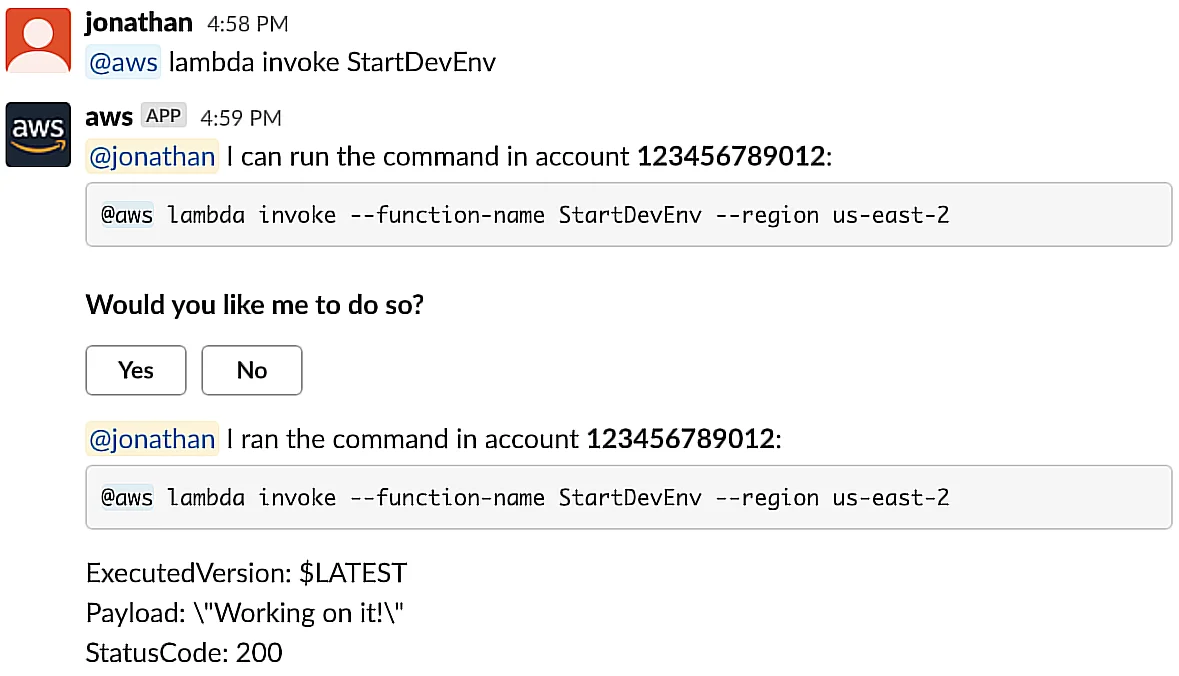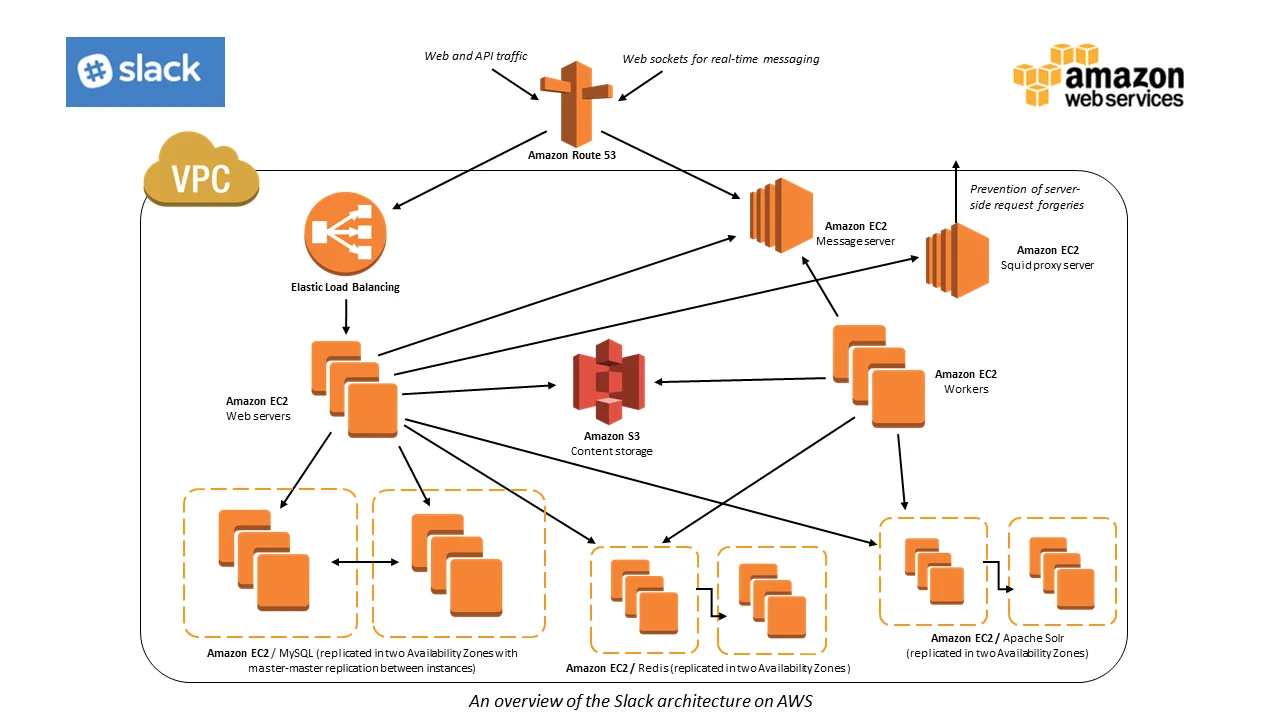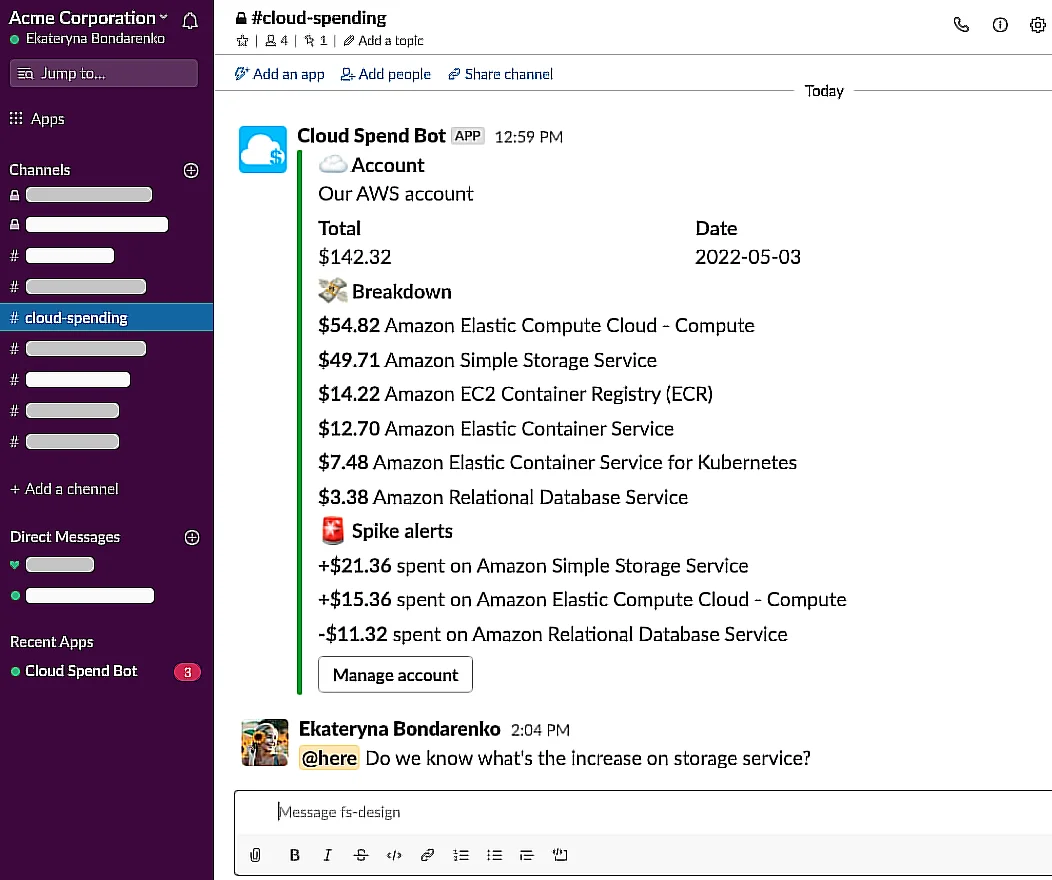The Slack messaging app is popular because it is easy to use, affordable, and highly customizable. With Slack, you can collaborate in teams and with colleagues in real-time, accessing files from anywhere.
Slack is also widely used because it enables users to create and join channels. In addition, it integrates with multiple apps and services, working seamlessly with the tools you already use.
In addition, Slack offers cost-effective pricing plans. Does it achieve this by passing its own cloud cost savings to customers? Here’s a quick guide to Slack in the cloud, including how much it spends on cloud infrastructure today, and:
Table Of Contents
Does Slack Run On Amazon Web Services (AWS)?
Slack has been using AWS cloud infrastructure since 2009 when it was still Tiny Speck, then a chat tool for a gaming platform. As Richard Crowley, Director of Operations at Slack once said, AWS was the only viable option then.
Slack no longer uses AWS for lack of alternatives. According to Crowley, AWS was good for them and there was no need for Slack to leave years later.
The goodness he was referring to was how AWS enabled Slack to be highly scalable without building and maintaining its own infrastructure locally.
In June 2020, Slack and AWS announced a renewed deal where Slack reiterated that it would continue to use AWS as its “preferred cloud provider”. AWS also announced it would offer Slack as an option for all its internal communications.
It appears that this deal is going to last for a while, as Slack and AWS seem to be making a dig at Teams and Azure, which compete with Slack and AWS respectively as Microsoft’s communication tool and public cloud platform.
How Much Does Slack Spend On AWS?
Slack currently spends at least $85 million per year on AWS services — or about $7.08 million per month. Slack committed to spending at least $425 million in five years until April 2023, according to an SEC filling.
The company spends at least $35 million more per year on AWS than it did previously.
In April 2019, Slack said in an SEC filing that it was committed to spending $250 million through 2023. That meant, Slack would spend $50 million per year on AWS services. More specifically, Slack would spend that much on “processing and delivery infrastructure”.
- By comparison, Lyft, the ride-hailing service and Uber rival, planned to spend $320 million on AWS over three years, from 2019 through 2021.
- Pinterest committed to spending $750 million over the next six years, until July 2023.
Based on the $50 million per year figure, Slack’s AWS spend accounted for 12.5% of its annual revenue for 2019 — and about 10% of its operating expenses. According to Slack, it generated $400.6 million in revenue in 2019, an 82% increase, but suffered a $138.9 million net loss.
According to the new owner Salesforce, Slack’s $85 million AWS expenditure for the fiscal year ended January 31, 2022 would represent 5.7% of its expected $1.5 billion revenue.
What Cloud Services Does Slack Use?
Slack’s architecture is based on several AWS services, including the following major ones:
- Amazon Elastic Compute Cloud – Amazon EC2 provides the compute power to run basic tasks within Slack.
- Amazon Simple Storage Service – Amazon S3 stores Slack users’ static assets and file uploads.
- Amazon Elastic Load Balancing – Amazon ELB enables workload balancing across Amazon EC2 instances.
- Amazon Elastic Block Store – Amazon EBS automatically backs up Slack’s MySQL instances (running on Amazon EC2 i2s instances) every night. Amazon EBS also stores temporary files before they move to Amazon S3.
- Amazon Virtual Private Cloud – Slack uses Amazon VPC to manage security groups and firewall rules.
- Amazon Identity and Access Management (IAM) – The AWS service enables Slack to control user roles, credentials, and access permissions.
- AWS Key Management Service – The Enterprise Key Management (EKM) service enables Slack to encrypt files and messages for tighter security.
- Amazon Route 53 – Slack uses this service for DNS management.
- Amazon Chime – Slack uses the Chime audio and video calling infrastructure to support Slack Calls, including screen-sharing and group meetings.
- Amazon AppFlow – This is an integration that enables Slack users to transfer data between Slack and AWS seamlessly without coding. No downloads and uploads necessary either.
- Amazon Chatbot – The AWS service enables DevOps teams to execute AWS operational activities, including monitoring, system management, and deployment workflows, all within Slack.

Credit: An illustration of how AWS Chatbot enables chats in Slack.
Besides those AWS services, Slack also uses the Redis data structure server, the Squid caching proxy, the Apache Solr search tool, and a MySQL database.
Slack’s new platform relies heavily on AWS cloud infrastructure to deliver its services.
Is Slack Profitable Now?
As of April 2021, Slack was not profitable; it made a $292 million net loss in the fiscal year 2021, down from a $567 million loss in 2020.
Slack Technologies generated $902 million in revenue between March and April 2021, an increase of 43% over the previous year’s $630 million.
In Q1, 2022, Slack generated $273.4 million in revenue, a 36% year-over-year growth. There were no further reports for 2022. Salesforce has since confirmed it won’t be disclosing individual revenue for its acquired companies, such as Slack and Tableau.
But by June 3, 2021, Slack had over 169,000 paid users and more than 950,000 connected endpoints using Slack Connect.
What Cloud Cost Optimization Techniques Does Slack Use?
Slack Technologies employs several native AWS cost-optimization techniques, including rightsizing resources to workloads, AWS Reserved Instance pricing, Spot Instance pricing, and AWS Auto Scaling.
There is a tight integration between Slack’s architecture and AWS. Picture this illustration from AWS itself:

Credit: An illustration of Slack architecture on the AWS public cloud platform.
That implies the company also uses cost allocation tags to track AWS usage by department, project, or other criteria. In addition, Slack leverages AWS Trusted Advisor to identify and optimize potential cost savings.
In the same way, Slack sends detailed cloud spend reports to other companies, it also sends it to its teams, like this:

Credit: Slack sends detailed CloudTrail Events and CloudWatch Alarms to specific team members for further analysis.
How Does Slack Monitor Its Cloud Spend?
Slack uses Amazon CloudTrail to monitor logs that are related to Amazon EC2 instances. It also uses Amazon Route 53 for DNS management.
However, the company doesn’t explicitly detail how it continuously monitors its AWS cost data.
How to View, Understand, And Control Your AWS Spend The Easier Way With Slack + CloudZero
Slack + CloudZero is a match made in cloud cost optimization heaven.
CloudZero provides real-time cost allocation, and allocates 100% of your cloud spend in a few hours — not days or weeks.
You do not need cost allocation tags here, so CloudZero saves you the hassle of maintaining perfect tags, unlike native AWS cost tools like AWS Cost Explorer.
Yet, CloudZero will accurately surface your tagged, untagged, and untaggable resources, as well as the cost of individual tenants within a shared environment.
In addition, CloudZero helps you understand your per-unit costs instantly. There are 12 unit cost dimensions available by default, including cost per customer, cost per team, cost per project, and cost per feature.
In addition, you can also add custom dimensions to understand your cloud costs in the context that is most relevant to your business, such as cost per customer per feature.
You can take advantage of this granularity across your multi-cloud environment; AWS, Azure, GCP, Oracle Cloud as well as across platforms like Snowflake, Kubernetes, Databricks, Datadog, New Relic, MongoDB, and more.
Ultimately, Slack + CloudZero delivers timely, noise-free, and context-rich cost anomaly alerts straight to exactly who needs to see it, when they need to see it.
This enables you to quickly get to the root cause of the cost anomaly and stop it before it becomes a budget overrun. You can also get finance and other stakeholders involved with detailed alerts to prevent a surprise cloud bill.
Companies like Drift, Remitly, and MalwareBytes use these CloudZero strengths to capture, understand, and optimize their cloud costs. CloudZero has even helped Drift to save over $4 million. You can, too.









